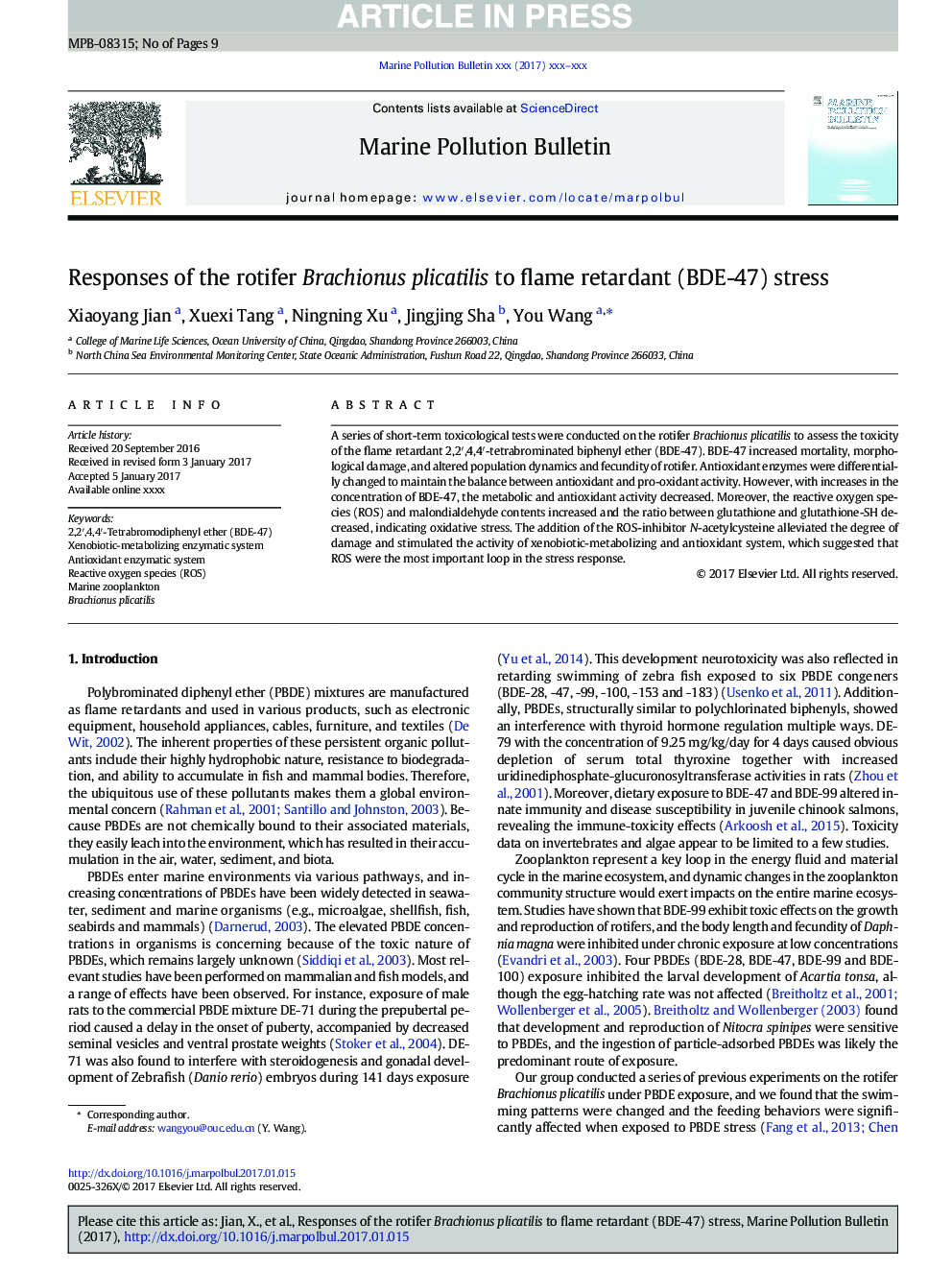| Article ID | Journal | Published Year | Pages | File Type |
|---|---|---|---|---|
| 5757609 | Marine Pollution Bulletin | 2017 | 9 Pages |
Abstract
A series of short-term toxicological tests were conducted on the rotifer Brachionus plicatilis to assess the toxicity of the flame retardant 2,2â²,4,4â²-tetrabrominated biphenyl ether (BDE-47). BDE-47 increased mortality, morphological damage, and altered population dynamics and fecundity of rotifer. Antioxidant enzymes were differentially changed to maintain the balance between antioxidant and pro-oxidant activity. However, with increases in the concentration of BDE-47, the metabolic and antioxidant activity decreased. Moreover, the reactive oxygen species (ROS) and malondialdehyde contents increased and the ratio between glutathione and glutathione-SH decreased, indicating oxidative stress. The addition of the ROS-inhibitor N-acetylcysteine alleviated the degree of damage and stimulated the activity of xenobiotic-metabolizing and antioxidant system, which suggested that ROS were the most important loop in the stress response.
Keywords
Related Topics
Physical Sciences and Engineering
Earth and Planetary Sciences
Oceanography
Authors
Xiaoyang Jian, Xuexi Tang, Ningning Xu, Jingjing Sha, You Wang,
